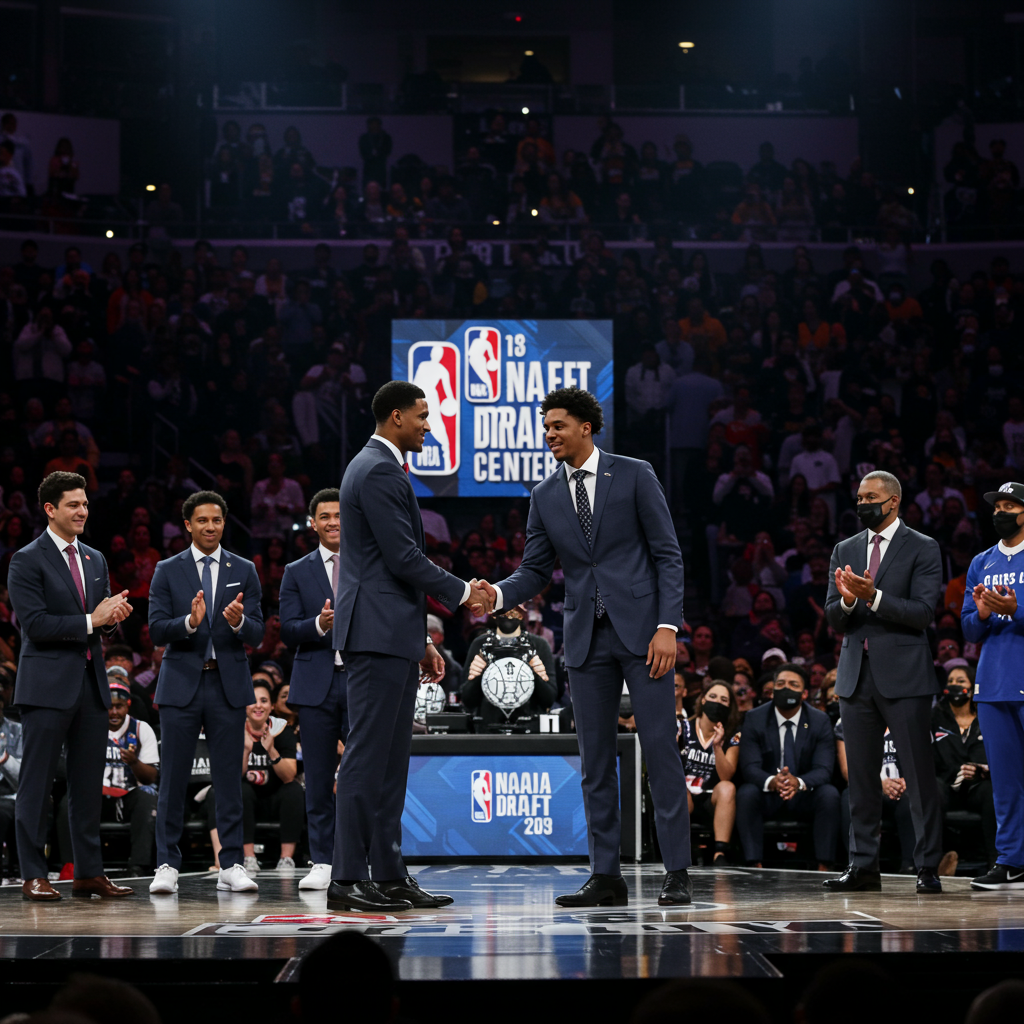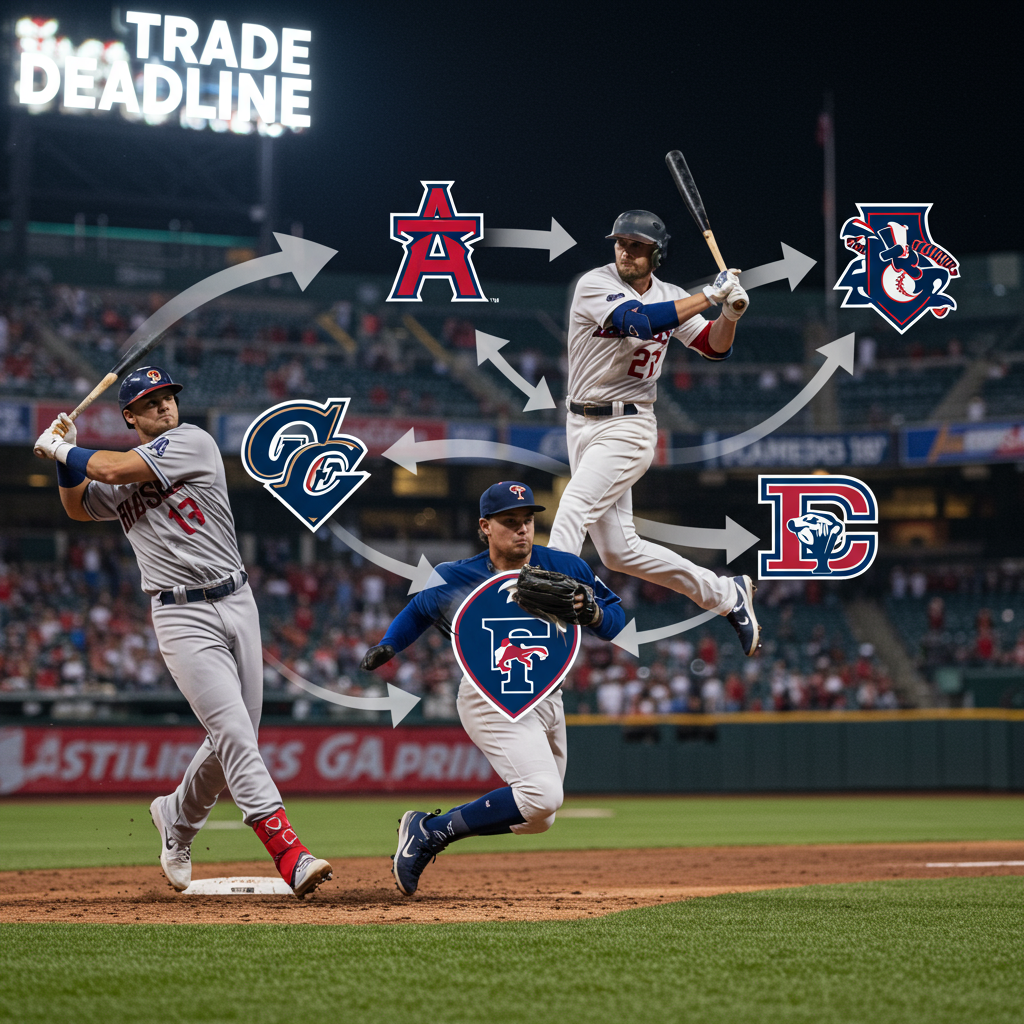Round 1 of the 2025 NBA Draft unfolded with expected top picks, surprising moves, and significant trades that reshaped team futures. From the Dallas Mavericks kicking off the night with the No. 1 selection to the LA Clippers closing the first round at No. 30, draft night at Barclays Center in Brooklyn delivered plenty of drama and intrigue.
With the unexpected lottery results positioning teams like the Mavericks atop the board, the draft landscape was already primed for shifts. Analysts weighed in on which teams scored big, which players were surprising selections, and the potential impact of the night’s biggest deals.
Let’s break down the key storylines and selections from the first 30 picks.
The Top of the Draft: No Surprises at the Very Top, Then Some Twists
The first few picks unfolded largely as anticipated based on pre-draft projections, although the lottery outcome itself was a major stunner.
No. 1 to Dallas Mavericks: Cooper Flagg (Duke)
The Mavericks, who vaulted to the top pick with just a 1.8% chance in the lottery, landed the consensus No. 1 prospect in Cooper Flagg. The 6-foot-8 forward from Duke is widely considered the safest pick in years and boasts a skillset that projects well beyond just scoring, often placed in the “Anthony Davis tier” of prospects. Flagg is a versatile player known for his hustle, passing, and shooting potential, coupled with elite defensive instincts and competitiveness. While some analysts note his potential Hall of Fame ceiling is contingent on his shot creation development, Dallas leadership is already envisioning him playing alongside key frontcourt pieces like P.J. Washington, suggesting no immediate plans to move major assets.
No. 2 to San Antonio Spurs: Dylan Harper (Rutgers)
Holding the second pick, the Spurs selected Rutgers guard Dylan Harper. Described as a big-bodied lefty combo guard with a high floor, Harper brings skill, poise, and playmaking instincts. While San Antonio has added other guards recently, many saw Harper as the best talent available. However, pre-draft reports indicated the Spurs were listening to trade offers for this pick, demanding a significant return, partly due to potential fit questions with Harper’s shooting percentages (particularly off-dribble) alongside other interior-focused players like Victor Wembanyama.
No. 3 to Philadelphia 76ers: VJ Edgecombe (Baylor)
The 76ers, who moved up to third, selected Baylor wing VJ Edgecombe. Known for his explosive athleticism, particularly dunks and blocks, Edgecombe is seen as a terrific defensive player who complements his game with a strong spot-up jumper. While he needs to improve his shot creation, Philadelphia is seen as having enough existing creators for him to develop at his own pace. His fit addresses the team’s need for better defensive infrastructure and size on the wing, though some pre-draft speculation suggested the Sixers might trade this pick after missing out on the top two talents.
No. 4 to Charlotte Hornets: Kon Knueppel (Duke)
Charlotte added shooting and playmaking with Duke guard/forward Kon Knueppel. Highlighted for his sharpshooting, intelligent pick-and-roll ability, and crafty scoring, Knueppel is seen as an immediate fit designed to space the floor effectively for LaMelo Ball and Brandon Miller. While his average athleticism is noted as a limitation, his shooting prowess was a clear target for the Hornets, who also added another floor spacer in Liam McNeeley later in the round.
No. 5 to Utah Jazz: Ace Bailey (Rutgers)
One of the night’s biggest surprises came at No. 5, where the Utah Jazz selected Rutgers forward Ace Bailey. This pick caught many off guard, including Bailey himself, who reportedly tried to maneuver his way to other destinations and declined multiple workout requests from Utah. Despite this, the Jazz front office felt they knew enough about the “ridiculous shot-making machine” with swagger to make the pick, citing scouting by team president Austin Ainge. While Bailey possesses significant scoring talent, analysts note he needs refinement in shot creation and defensive consistency.
Winners, Steals, and Surprises in Round 1
Beyond the top five, the first round saw several teams praised for landing high-value prospects and others making unexpected selections.
Phoenix Suns Land a Potential Anchor (No. 10: Khaman Maluach, Duke)
The Phoenix Suns were widely seen as clear winners by landing Khaman Maluach at No. 10. The top-ranked center in the draft, Maluach’s fall to this spot significantly bolstered Phoenix’s roster. Scouts rave about his immense upside, citing his size, length, athleticism, natural defensive instincts, improving shooting, competitiveness, and enthusiasm. Maluach brings high-level intensity, rim protection, rebounding, and switchable defense – qualities the Suns needed – while also providing much-needed youth and energy. His lob-catching ability makes him an excellent pick-and-roll partner, and his background through the NBA Academy Africa program has been noted by teams.
Miami Heat Score a Playmaking Guard (No. 20: Kasparas Jakucionis, International)
Another team praised for their pick was the Miami Heat, who selected Kasparas Jakucionis at No. 20. Ranked No. 11 on ESPN’s big board, his slide was surprising, but analysts quickly pointed to Miami as an ideal landing spot. The Heat desperately needed shot creation and playmaking, and Jakucionis’s savvy feel for the game and ability to run pick-and-roll could see him eventually emerge as the franchise’s future point guard. His size (6-foot-6) offers lineup flexibility, and his physical style and toughness perfectly fit the Heat culture, drawing comparisons to former Heat guard Goran Dragic.
Portland Trail Blazers Take a Big Swing (No. 16: Yang Hansen, International)
The Portland Trail Blazers delivered one of the night’s biggest surprises by selecting Chinese center Yang Hansen at No. 16. Projected by many as a second-round pick and not invited to the Green Room, Yang’s selection was a significant jump. Despite drafting another 7-footer last year, the Blazers view Yang through a “best player available” lens, citing extensive scouting and excitement about his skill level and intangibles. They plan to bring him to the NBA immediately for development.
Best Value Picks Highlighted
Analysts pointed to several picks outside the very top as offering excellent value and fit:
San Antonio Spurs (No. 14: Carter Bryant, Arizona): While needing time to develop, Bryant offers a 3-and-D skillset that projects as an ideal complement to the Spurs’ young core including Wembanyama and Harper.
Oklahoma City Thunder (No. 15: Thomas Sorber, Georgetown): Seen as a savvy long-term play, Sorber provides a skilled center option the Thunder can be patient with, addressing a potential future need given pending contract situations for their current bigs.
Minnesota Timberwolves (No. 18: Joan Beringer, International): A raw but physically gifted center, Beringer’s upside and fit developing behind Rudy Gobert was praised as addressing a long-term need with significant potential.
Risky Trades and Questioned Strategies
Draft night always brings trades, and one move in particular drew sharp criticism from analysts.
The Pelicans’ High-Stakes Gamble
The New Orleans Pelicans made a bold move, trading up to No. 13 by sending the Atlanta Hawks the No. 23 pick and their unprotected 2026 first-round pick (the more favorable between the Pelicans and Bucks’ picks). They used the No. 13 pick on Derik Queen. While the Pelicans were reportedly keen on Queen, this trade was widely viewed as a significant risk. Analysts called it “jumping out of the plane without a parachute” and a “mistimed decision,” citing the lack of a safety net if injuries strike or the team struggles, potentially handing Atlanta a high lottery pick in a stronger future draft. Concerns about Queen’s long-term fit alongside Zion Williamson, given both are offensive-minded bigs with defensive and spacing questions, also contributed to the skepticism around the move. The Hawks, conversely, were lauded for extracting significant value by trading back ten spots.
Other Team Moves
The Orlando Magic were noted for being active contenders, executing a trade involving the No. 16 pick to acquire Desmond Bane and later selecting Jase Richardson at No. 25. These moves aimed to add valuable, inexpensive depth and talent during their competitive window with Paolo Banchero and Franz Wagner.
Team Grades and Lingering Questions
With Round 1 concluded, teams look ahead to Round 2, while analysts assess their draft performance.
Brooklyn Nets’ Project-Heavy Draft
Holding five first-round picks (Nos. 8, 19, 22, 26, 27), the Nets took a clear approach focused on young, project-oriented prospects, including multiple international players and one-and-done college talents. Picks like Egor Demin (No. 8), Nolan Traore (No. 19), Drake Powell (No. 22), Ben Saraf (No. 26), and Danny Wolf (No. 27) highlighted this strategy. Analysts were divided, with some giving a middling grade due to a perceived lack of proven production, while others respected the team’s vision to build around positional size, passing ability, and a fit for Coach Jordi Fernandez’s system, noting the ample time they’ll have for development.
Biggest Snubs of Round 1
Two notable players surprisingly remained on the board heading into Round 2: Rasheer Fleming (Saint Joseph’s) and Maxime Raynaud (Stanford). Both were ranked significantly higher on many final mock drafts and projections, leaving teams potentially looking to jockey for position early in the second round to secure their services.
With Round 1 in the books, teams will now regroup and prepare for Round 2, seeking to add more talent and address needs based on how the first 30 picks unfolded.




